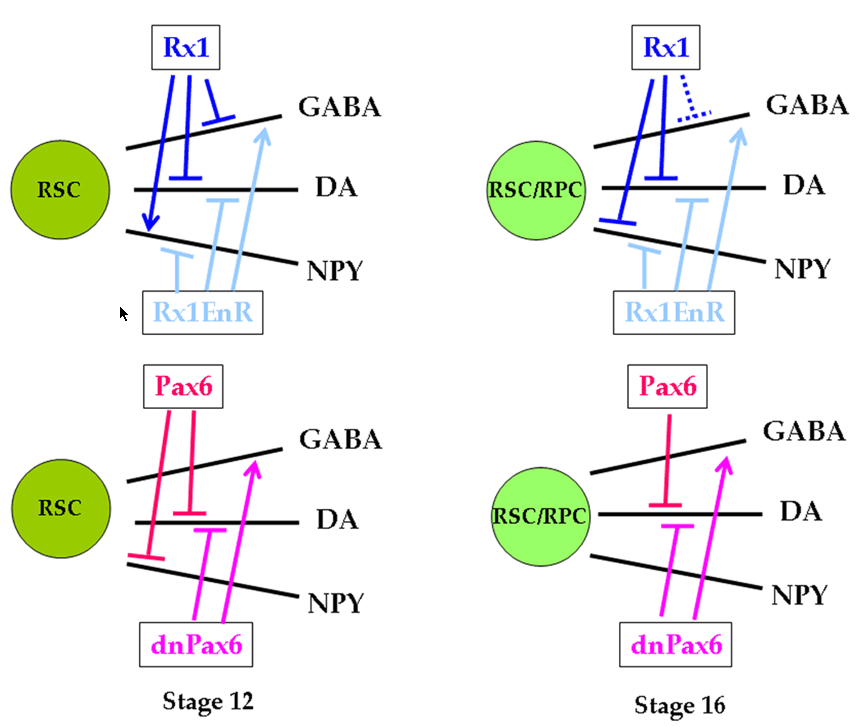![]() Figure 5 of
Zaghloul, Mol Vis 2007;
13:86-95.
Figure 5 of
Zaghloul, Mol Vis 2007;
13:86-95.
Figure 5. The developmental programs that produce amacrine cell subtypes are differentially affected by Rx1 and Pax6 in a time-dependent manner
The effects on the number of amacrine cells produced after induction of the different Rx1 and Pax6 constructs at the two eye field stages are summarized. Retinal stem cells (RSC) in the stage 12 eye field are repressed by Rx1 from producing GABA and DA amacrine cells, but Rx1 is required for NPY amacrine cells. In contrast, Pax6 represses the production of DA and NPY amacrine cells. Loss-of-function of either Rx1 (by Rx1EnR) or Pax6 (by dnPax6) is required for GABA amacrine cell production. In the stage 16 eye field, which is likely comprised of both RSC and retinal progenitor cells (RPC) [22], Rx1 continues to repress DA amacrine cells, but the effect on GABA amacrine cells is much reduced. In addition, Rx1 now represses NPY amacrine cells. Pax6 continues to repress DA cells, but the effect on NPY cells is no longer detectable. As at stage 12, loss-of-function of either Rx1 (by Rx1EnR) or Pax6 (by dnPax6) is required for GABA amacrine cell production. These data indicate that Rx1 and Pax6 differentially affect the production of the different amacrine subtypes over time. Because both genes are considered to be transcriptional activators [28,43], their inhibitory effects on amacrine subtypes are likely to be transcriptionally indirect.
